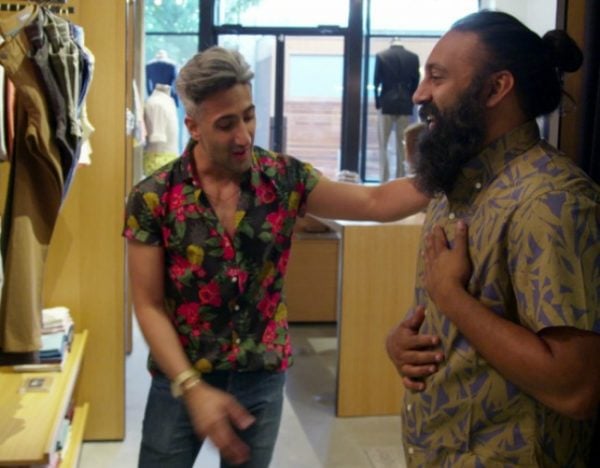The revived Queer Eye, currently streaming on Netflix, is not about transforming an unfashionable, scraggy, failure of a man into something pretty, complemented by a nice feature wall in the bedroom – or so the reviews have unanimously argued.
Rather, the makeover show aims to, according to Junkee, find “unhappy, unfulfilled and lonely men [and try to] fundamentally improve their lives.”
But is that reading a little too romantic?
The first season of Queer Eye for the Straight Guy appeared on our screens in late 2003, when the ugly ducking to beautiful swan trope was particularly pervasive. It was a time of profound individualism, where we were being reminded politically, socially and culturally, that the individual was in charge of their own destiny; if you are poor, or sick, or obese, or uneducated, that’s your problem and you really ought to fix it.
Television shows like The Swan, Trinny and Susannah, and Extreme Makeover, worked for a time. Precisely the same time, in fact, as Queer Eye for the Straight Guy.
They were ambitious. They were extraordinarily capitalist. And they were about the individual taking responsibility for oneself – an overtly political message.
Is the new Queer Eye problematic? We discuss on Mamamia Out Loud. Post continues below.
The Netflix revival of Queer Eye has replaced the original fab five, but practices the same format. Five men approach a subject who has been nominated by his friends or family for a makeover. There’s the grooming guy, the fashion guy, the culture guy, the food and wine guy, and the interior design guy. They are playful and vibrant – for the most part authentically bonding with the man at the centre of the episode, whether it’s Tom from Georgia who hasn’t had much to do with the LGBTQI community, or the white policeman, Cory, who proudly wears a Make America Great Again cap.


Top Comments
Seriously! Have you even watched this show!?! It's all as bout the beautiful modern PC thoughtful messages these lovely men are trying to communicate to the subjects in each episode. They are not acting when we see the relationships develop. They help create a space to have people FEEL comfortable. They're not advertising furniture stores. You should commend them for being so holistic in their approach! Not picking our the one tiny thing in the show that barely gets screen time!!!!
I'm pretty sure the show is meant to be a makeover show not an emotional & psychological help show! Gosh how many plastic surgery makeover shows are there, where's your article on them?